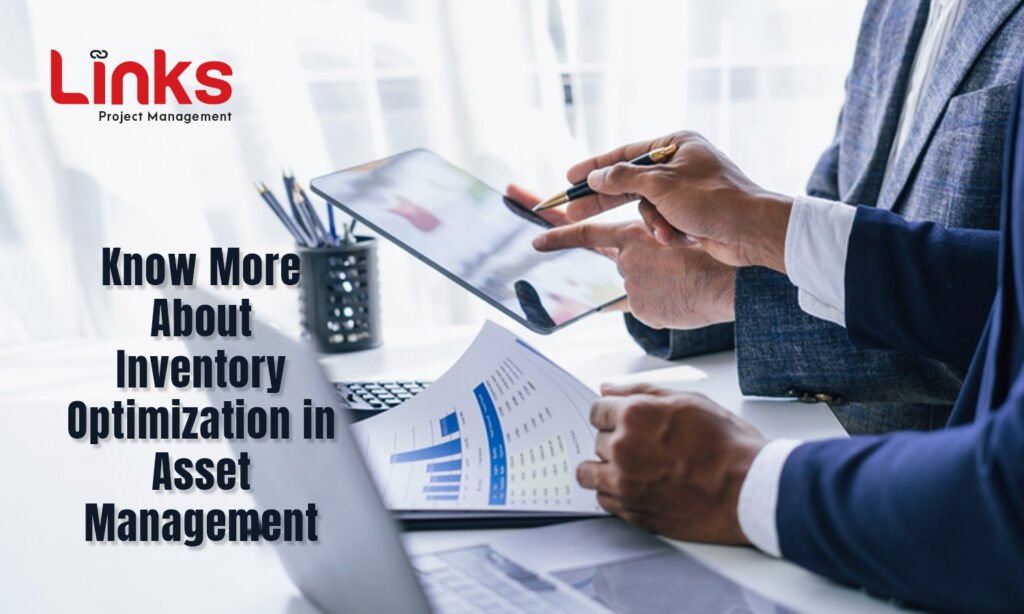Know More About Inventory Optimization in Asset Management
In asset management services, inventory optimization is an important part of ensuring efficiency, reducing costs, and maximizing asset availability. Asset management services cover a variety of industries, including industrial, logistics, healthcare, and commercial, each with unique inventory management requirements and strategy. Inventory Optimization Inventory optimization seeks to achieve a delicate balance between maintaining adequate inventory levels to meet demand and minimizing excess stock that ties up capital and incurs additional costs. For asset management services, this involves several key processes: Demand forecasting: Accurate demand forecasting is essential to determine the best level. Factors such as historical usage, seasonality, market conditions and customer behavior are considered reasonable estimates. Delivery Time: It is important to understand the delivery time (the time between placing an order and receiving the order). To prevent stock-outs and overstocking, stock levels should be adjusted to take delivery times into account. Service Level Management: Establishing Service Level Agreements (SLAs) helps define the desired level of customer service and guides inventory decisions. This includes setting goals for metrics like fill rate (the percentage of requests filled in the store) or on-time delivery. Inventory Allocation Strategies ABC Analysis: Ranking inventory items by value (usually measured in annual value) helps prioritize management strategies. ‘A’ factors are high value and difficult and require more monitoring and frequent monitoring; ‘C’ factors are less valuable and require more frequent monitoring. Just-in-Time (JIT) Inventory: JIT principles promote maintaining low inventory levels by matching product to demand. These strategies reduce operating costs but require good supply chain management and reliable suppliers. Safety stock management: Maintaining safety stock, a buffer to prevent unexpected fluctuations in demand or interruptions in supply, allows operations to continue. Calculating the security level involves evaluating the required changes and managing the time required for the change. Economic Efficiency Quantity (EOQ): The EOQ model calculates the optimum order quantity by reducing total inventory costs and balancing order costs and inventory costs. This method helps determine the order quantity and duration. Vendor Managed Inventory (VMI): In a VMI program, suppliers track and replenish inventory levels where customers track them based on agreed-upon criteria, such as usage data or predetermined criteria. This reduces the customer’s administrative burden and improves the supply chain. Technology and Equipment Inventory Management System: The use of modern inventory management software allows for real-time tracking of inventory levels, demand forecasting, and automatic replenishment processes. Integration with ERP systems simplifies information and increases decision-making capabilities. Data Analytics: Using data analytics allows management to identify trends, adjust inventory policies, and improve forecast accuracy. . Benefits of Inventory Optimization Cost Reduction: Reducing excess inventory lowers holding costs (storage, insurance, depreciation) and minimizes the risk of obsolete stock. Improved Service Levels: Meeting demand promptly improve customer satisfaction and loyalty. Operational Efficiency: Well-orgnanized inventory processes and reduced stockouts contribute to smoother operations and reduced downtime. Strategic Advantage: Effective inventory management helps businesses to allocate resources strategically, focus on core competencies, and respond swiftly to market changes. Challenges and Considerations Complexity: Balancing multiple variables—demand variability, lead times, economic constraints—poses challenges in achieving optimal inventory levels. Integration: Ensuring seamless integration of inventory management practices with overall business strategies and IT systems is crucial for success. Risk Mitigation: Anticipating and mitigating risks, such as supply chain disruptions or economic volatility, requires proactive planning and contingency measures. Inventory optimization in asset management services is important which requires continuous refinement and adaptation to evolving business environments. Organizations can achieve substantial improvements in efficiency, cost-effectiveness, and customer satisfaction by leveraging advanced analytics, technology, and strategic frameworks, such as Caticx technology. As industries evolve and customer expectations shift, effective inventory management with Caticx technology remains pivotal, serving as a cornerstone for successful asset management services. This approach not only enables businesses to thrive in competitive markets but also ensures they maintain operational resilience amidst changing market dynamics.

